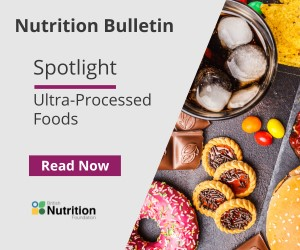Journal list menu
Export Citations
Download PDFs
Table of Contents
no
How do we differentiate not demonise – Is there a role for healthier processed foods in an age of food insecurity? Proceedings of a roundtable event
- First Published: 10 May 2023
Open Access
oa
Comparing product healthiness according to the Health Star Rating and the NOVA classification system and implications for food labelling systems: An analysis of 25 486 products in Australia
- First Published: 28 October 2023
no
Is breakfast consumption among Brazilian schoolchildren associated with an ultra-processed food dietary pattern?
- First Published: 01 November 2022
no
Ultra-processed food consumption in Argentina according to income level and its association with the intake of healthy foods
- First Published: 09 July 2023
no
Underreporting of energy intake is not associated with the reported consumption of NOVA-classified food groups in socially vulnerable women
- First Published: 09 November 2022
no
Most meal and snack patterns are stable over a 3-year period in schoolchildren in southern Brazil
- First Published: 22 January 2022
Free Access
free
Processing the evidence to evaluate mechanisms, costs and future solutions
- First Published: 10 May 2023





